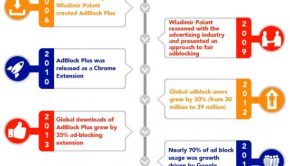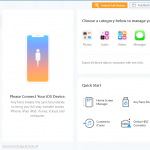Smart Devices Are Capable Enough to Jeopardize Your Security
There are a lot of changes taking place in the business world today. One of the things that all businesses need to go out of their way to keep up with is cyberattacks. Most of these target traditionally unconnected devices. As we enter into a new generation of using connected, intelligent devices in the workplace businesses are growing more productive, serving customers in more efficient ways, and also expanding into new markets. While this is good news, as it happens it brings more smart devices into the burgeoning Internet of Things (IoT). This transition has scrambled the historical notion of the corporate endpoint. Now we’ve been forced to move beyond the realm of desktop and laptop computers. We’ve even been forced to move beyond the use of mobile phones and tablets. Today, there are millions of “things” that are connected. These “things” populate our enterprise’s far-flung networks. They also send and receive a lot of valuable data across the internet.
Understanding the Role of Digital Disruption
Although digital disruption is important and has its role in our business culture today, it also comes with a price. This is because with each new endpoint there’s a potential entry point for cyber criminals. When you look at this from a security perspective you can imagine all the nasty sci-fi scenarios that you can easily come up with. Some companies even got a real life, sneak peek at one of these scenarios last year when they had their digital video cameras compromised by the Mirai botnet powered massive distributed denial-of-service (DDoS) attacks that cyber attackers launched against important parts of the Internet. This incident actually stunned the security world. It made a lot of people stand up and take notice of how successful some cyber attackers were at finding new ways they could use to infect devices that weren’t susceptible in the past. Symantec says this just goes to show how enterprises are now faced with the threat of defending against attacks that start with hacks of management interfaces on devices that weren’t even connected to the internet in the past – things like video cameras, fish tanks, and coffee machines.
As an IT professional, there are many new challenges that arise due to the emergence of the IoT. One of the main challenges is learning how to handle security when it comes to endpoints, networks, and data in a world that’s now full of a lot more connected devices. Many of these devices weren’t even connected just a few short years ago – things like watches, office equipment, kitchen appliances, and smart washing machines. Attacks on these things can come from any vector. This is important to stand up and take notice of today because we’re all connected.
Living in the Age of Smart Devices
Today, most people realize that their computers and its software are vulnerable to cybersecurity threats. As such, they’ll take adequate steps to protect these items. While this is great, at the same time they unfortunately seem to forget about all the different smart devices they have directly connected to the same network that their computer is running on. This is something that it’s important for you to never overlook though because hackers can find a backdoor way into those systems. While these cutting edge technologies are really helpful for your business many of them were never designed to protect themselves against a digital attack. This is why they’re so vulnerable to various threats – including malware and IoT botnets.
Many people don’t understand what IoT botnets are though. This is because they’re still relatively new – only having been first created in 2016. However, these are something that everyone should familiarize themselves with since there will be 6.4 billion connections by 2020. It’s interesting to note this because essentially it’s telling you how many people are going to be hacked and affected by the malicious behaviors of cyber attackers. Every computer in this compromised network (along with any and all internet-connected device) was hijacked by these cyber attackers who are now using them for unapproved or illegal purposes, including deal of service attacks.
Botnets aren’t only growing in number today, they’re also becoming much more advanced. This is because now they’re able to target a lot more devices all at the same time. Today’s cyber attackers are able to use new code that lets them adapt old codes and they can also create new code opening all kinds of new types of malware up for use now. These cyber attackers are now unleashing their attacks on new targets as well. This is because there are new, more obvious targets available. This includes things like Wi-Fi cameras and security systems – things that offer them an easier way in which to circumnavigate around a lot of things, even when you’ve taken all the necessary, normal precautions.
Clearly, this means that IoT devices are much more vulnerable than those more traditional devices. According to Fortinet, there are two primary reasons why IoT devices are so commonly compromised. These include:
- There’s a lack of regulations surrounding the IoT industry today. While this may sound surprising to some people, it’s important to understand how this will directly impact your business instead of ignoring it or taking a “wait and see” attitude. This is something you need to understand because this means that many brands aren’t obligated to even think about cyber security threats and actions they can take to protect the devices that they use. Since this is the prevailing attitude today, many coders don’t even think twice about using things like trash code, hard coded passwords, backdoors, or any other type of design flaw that could compromise them. In fact, they treat these things as though they’re trivial.
- Unfortunately, a lot of IoT manufacturers don’t even have a Product Security and Incident Response Team (PSIRT) in place. Even those who do have one aren’t able to respond quickly to any new vulnerabilities that may arise. This means that even if they’re able to detect a threat, they don’t have anyone to whom they could report the issues, which means that not much can be done about them. As time goes on, this is becoming an even bigger problem, especially for businesses who should be taking a proactive approach to all of these things instead of waiting to simply react to them instead.
How to Protect Yourself
The importance of protecting yourself isn’t something that can be emphasized enough. This is growing more important today as new technologies are being deployed everywhere – in both homes and businesses alike. Many processes have also been revolutionized recently as well, which is making our lives even more convenient but at the same time it’s also placing us at an even greater risk of being “attacked.” This isn’t something that most people think of or pay attention to today, but it after reading this article you should understand why you need to protect your devices with network security intelligence. You’ll want to take these steps soon instead of being one of those people who tend to underestimate the importance of things here.
When you have some of these devices linked up in your network, take some time to prepare yourself for these attacks today. You can start by making sure that you have strong authentication set up at your access points. This will let you see and track devices therein. You should also keep track of your devices, including their manufacturers and software versions, so you can quickly identify how vulnerable these devices are when you uncover a threat. Additionally, establishing network segmentation and micro segmentation strategies will help make sure that any of your devices that are at risk are kept separate from your critical production resources. These steps will help ensure that your business gets back on track soon after any attack occurs.















